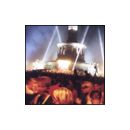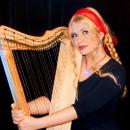Muy buenas a todos. Pues ya veis, aqui se habla con tal obviedad de este asunto, que nunca me atrevi a preguntarlo, pero he sacado valor y alla va:
Cuando estas Trabajando con varias pistas de Audio, La gente habla de ecualizar cada una de ellas, tratandose de cada instrumento, de forma que 'no pise' a las demas. Yo por ejemplo escucho que un instrumento esta pisando a otro, ¿cómo puedo saber qué frecuencia es la que tengo que aumentar en una pista y disminuir en otra? yo no soy capaz de escuchar las pistas y decir 'pues estan superponiendose demasiado por el rango 3-10 KHz...' no se si me entendeis
Asi mismo, ¿Es la solucion elevar algunos dB en los armonicos y las frec. fundamentales del instrumento de la pista y bajarle otro tanto a las demas?
Nunca supe enfrentarme a esta cuestion, y poco a poco espero ir cogiendo el dominio al tema, y afinar mi oido tanto como los vuestros. pero ahora necesito un poco de ayuda. Espero que mi problema se haya entendido.
Gracias a todos.
SALUDOS!
Cuando estas Trabajando con varias pistas de Audio, La gente habla de ecualizar cada una de ellas, tratandose de cada instrumento, de forma que 'no pise' a las demas. Yo por ejemplo escucho que un instrumento esta pisando a otro, ¿cómo puedo saber qué frecuencia es la que tengo que aumentar en una pista y disminuir en otra? yo no soy capaz de escuchar las pistas y decir 'pues estan superponiendose demasiado por el rango 3-10 KHz...' no se si me entendeis
Asi mismo, ¿Es la solucion elevar algunos dB en los armonicos y las frec. fundamentales del instrumento de la pista y bajarle otro tanto a las demas?
Nunca supe enfrentarme a esta cuestion, y poco a poco espero ir cogiendo el dominio al tema, y afinar mi oido tanto como los vuestros. pero ahora necesito un poco de ayuda. Espero que mi problema se haya entendido.
Gracias a todos.
SALUDOS!












